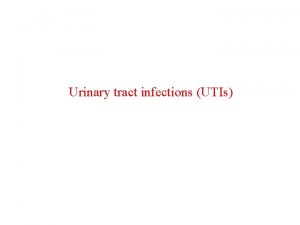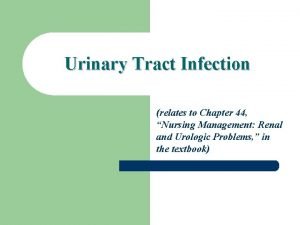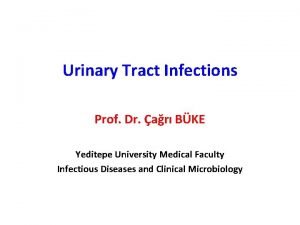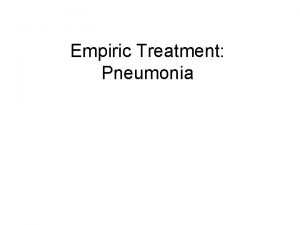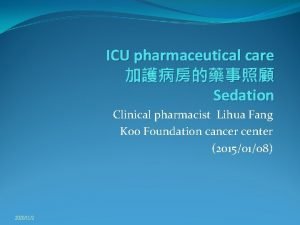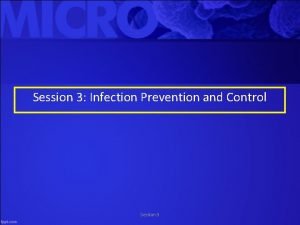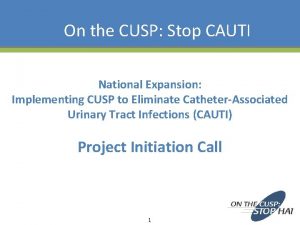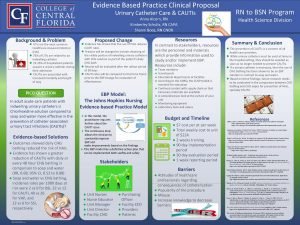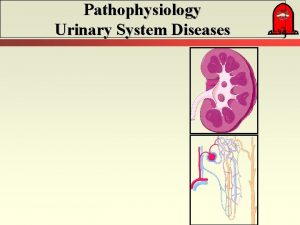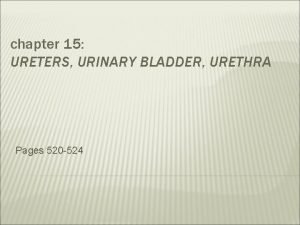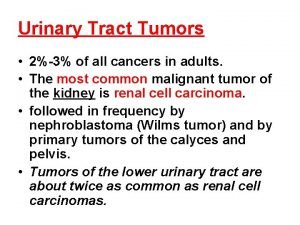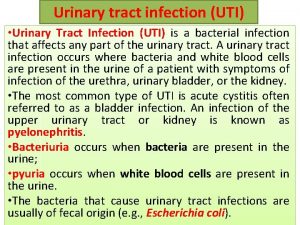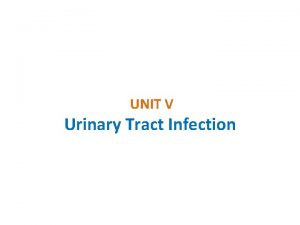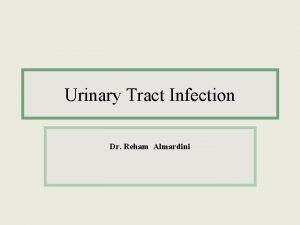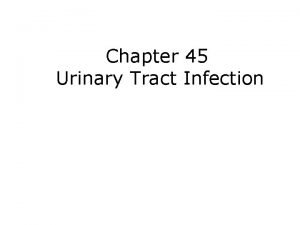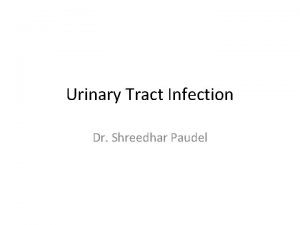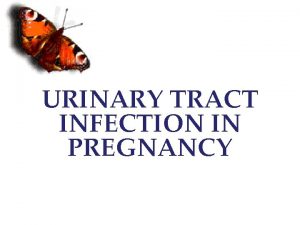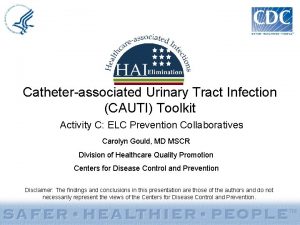CATHETER ASSOCIATED URINARY TRACT INFECTION CAUTI HARM FREE











- Slides: 11

CATHETER ASSOCIATED URINARY TRACT INFECTION (CAUTI) HARM FREE CARE NAME OF Service

BACKGROUND ‘Harm Free Care’ is a collective term used for different patient safety initiatives aimed at ensuring patients are kept safe and free from harm in our care Catheter Associated Urinary Tract Infection (CAUTI) was identified as one of the four main avoidable harms under the ‘Harm Free Care’ Workstream. The overall aim of the group is to enable this service to reduce harm events and improve safety across the trust Reporting of CAUTI within XXX was a new process rolled out from 2013; therefore prior to this XXX had no evidence of the rate of CAUTI within the community

PROBLEM Increase in reporting of Catheter Associated Urinary Tract Infections across the trust based on dipstick testing (not evidence based) Lack of clarity around processes involved in reporting, managing and treating CAUTI Increase in complex patients being treated in the community requiring catheter care High turnover of community nursing staff therefore inexperienced cohort of nurses managing more complex patients

SOLUTION Audit of all CAUTI incident reports submitted April 2015 -March 2016 and a re-audit April 2016 -March 2017 The CAUTI Harm Free Care Group established 3 main work areas: Review the current local and national CAUTI definition Ø Awareness Campaign to enable staff to identify, manage and treat CAUTI Ø Review of current reporting process – CAUTI template Ø

Definition Awareness Reporting • Joint working with infection control team to review most current definitions • NICE 2015 , Sign 2012, CDC 2016 utilised to establish the correct identifying criteria to diagnose CAUTI • Pan Mersey Antimicrobial Recommendation for treatment • A 4 and A 5 posters developed with trust communications team and final version printed and launched on the trust communications bulletin, paper version distributed to all GPs , Community Matrons and District Nurses • Identified Continence Nurses for each locality to deliver bespoke District Nurse education and support with complex catheter patients. Hot Desk in bases across the city. Deliver trust wide competency based Catheter Workshop • Incident template amended to ensure identifying criteria available in drop down boxes • Mandatory fields included to ensure accurate information recorded • All reported CAUTI incidents sent to Continence Team for validation and feedback • CAUTI RCA incident template created for all confirmed CAUTI to establish if avoidable or unavoidable • Continence Team Nurse to attend identified locality Being Open meeting to confirm actions - support team with identified learning after the event / shared learning / highlight good practice

OUTCOME The overall number of incidents being reported between 15/16 and 16/17 has reduced from 57 to 26 (54%) see below graph;

OUTCOME Consequently the number of confirmed CAUTIs between 15/16 and 16/17 has also reduced from 9 to 2 (78%) see below graph;

OUTCOME Reduced number of patients acquiring infections from catheters in our care Staff report better awareness and more confidence to report instances accurately as well and treat and manage patients correctly and safely An MDT is held with neighbouring NHS trusts bi-monthly to review complex catheter patients and create patient pathways to establish a streamlined patient journey. As a result complex catheter patients can be cared for in the community in their own homes without needing a hospital admission due to collaborative working across primary and secondary care. Staff are proactively managing catheter patients and question the reason for a catheter insertion – resulting in an increased number of referrals into the service for a Trial Without Catheter (TWOC)

FUTURE The CAUTI Harm Free Group will continue to meet on a monthly basis CAUTI Harm Free Group to incorporate all complex catheter incidents for review Annual re-audit of CAUTI incidents and catheter related incidents for review by Continence Team to monitor trends and themes and feedback as necessary - CCG / MDT Awareness campaign to extend and re-launch Blocked Catheter Pathway within XXX Work with XXX CCG to develop a live patient register to establish how many patients in the community have a catheter

THANK YOU

 Urinary tract infection in pregnancy ppt
Urinary tract infection in pregnancy ppt Nursing management for urinary tract infection
Nursing management for urinary tract infection ç
ç Renal lobe and lobule
Renal lobe and lobule Complicated urinary tract infection
Complicated urinary tract infection Cvc care bundle checklist
Cvc care bundle checklist Cauti prevention bundle checklist
Cauti prevention bundle checklist Stop cauti
Stop cauti Pico question for cauti
Pico question for cauti Urinary tract obstruction
Urinary tract obstruction Anatomy of the urinary tract
Anatomy of the urinary tract Tumor in the urinary tract
Tumor in the urinary tract
